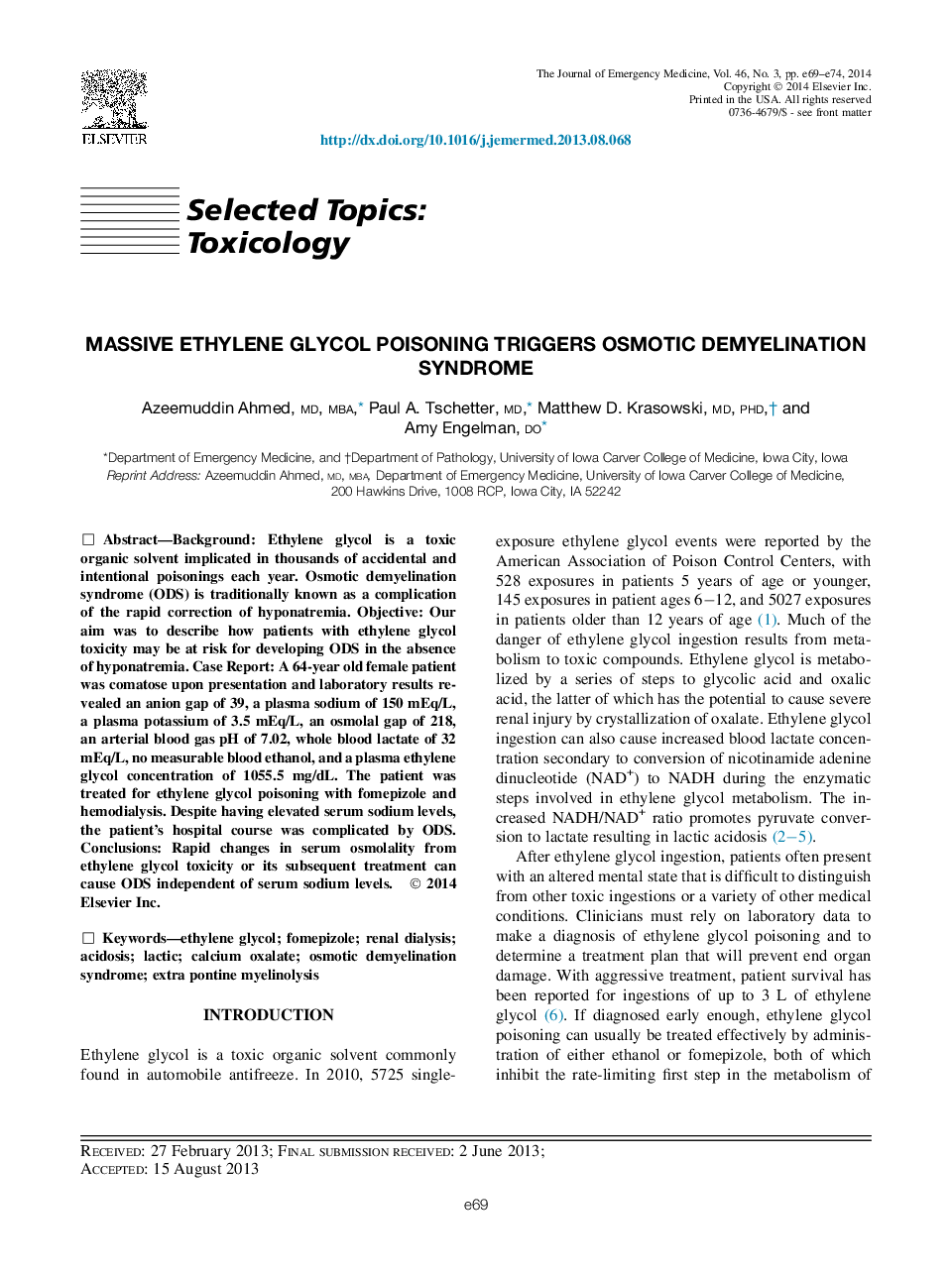| Article ID | Journal | Published Year | Pages | File Type |
|---|---|---|---|---|
| 3247707 | The Journal of Emergency Medicine | 2014 | 6 Pages |
BackgroundEthylene glycol is a toxic organic solvent implicated in thousands of accidental and intentional poisonings each year. Osmotic demyelination syndrome (ODS) is traditionally known as a complication of the rapid correction of hyponatremia.ObjectiveOur aim was to describe how patients with ethylene glycol toxicity may be at risk for developing ODS in the absence of hyponatremia.Case ReportA 64-year old female patient was comatose upon presentation and laboratory results revealed an anion gap of 39, a plasma sodium of 150 mEq/L, a plasma potassium of 3.5 mEq/L, an osmolal gap of 218, an arterial blood gas pH of 7.02, whole blood lactate of 32 mEq/L, no measurable blood ethanol, and a plasma ethylene glycol concentration of 1055.5 mg/dL. The patient was treated for ethylene glycol poisoning with fomepizole and hemodialysis. Despite having elevated serum sodium levels, the patient's hospital course was complicated by ODS.ConclusionsRapid changes in serum osmolality from ethylene glycol toxicity or its subsequent treatment can cause ODS independent of serum sodium levels.
